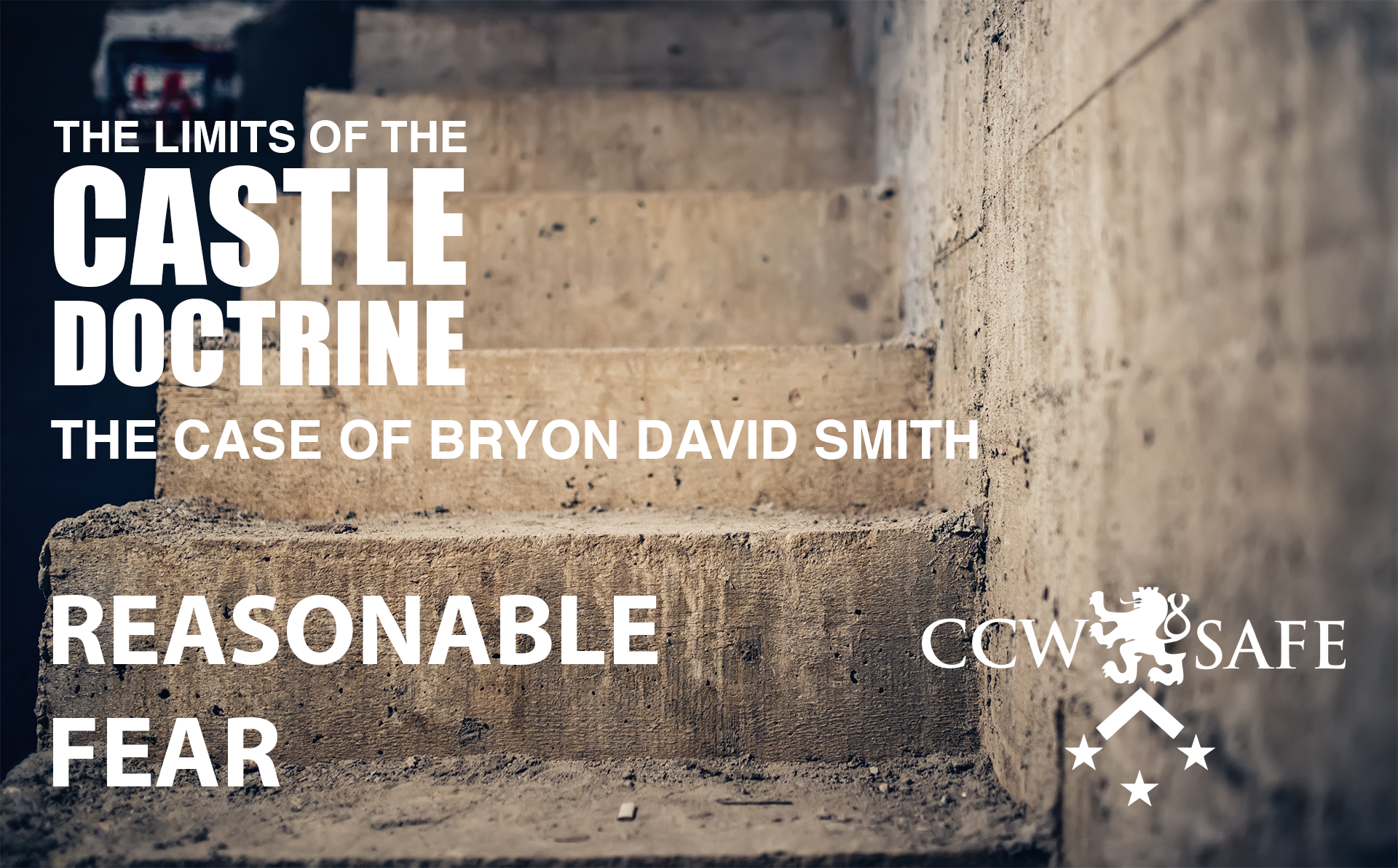
Posted on March 8, 2018
The Limits of the Castle Doctrine- The Byron David Smith Case- Reasonable Fear
The Limits of the Castle Doctrine
Lessons from the Byron David Smith Case
Part 4: The Role Reasonable Fear in the Legal Defense of Byron David Smith
In our series The Four Elements of Self-Defense, we’re exploring how location, escalation, reasonable fear, and post-incident accidents can affect the legal defense in the wake of a self-defense shooting. In our last installment, we explored how Byron David Smith’s actions to escalate the conflict factored into his prosecution. In this installment we look at the role reasonable fear played in his prosecution.
Byron David Smith had suffered several burglaries at his Little Falls, Minnesota home. “I don’t know who is going to break in when,” he told investigators. He had started wearing a holstered sidearm around the house. “I was no longer willing to live in fear.”
Two teens broke into Smith’s home on Thanksgiving day 2012. He had seen cousins Nick Brady and Kifer casing the house thanks to security cameras he had installed. Smith retreated to his basement where he waited with loaded a rifle and pistol. The teens broke into his home, and when they ventured into his basement, Byron David Smith shot them dead.
Smith had an audio recorder with him in the basement, and it captured the entire event — the breaking of a window; the creaking of the floor boards as Brady explored the house; the plodding footsteps as Brady came down the steps; and the three shots that killed him.
Ten minutes later, the recording captures Kifer as she wanders upstairs, looking for her cousin. As she approaches the basement door, Smith’s breathing quickens — he’s obviously in a distressed state. He is clearly afraid.
But the recording captures other emotions as well. When firing the third shot through Brady’s right hand and into his head, Smith shouts, “You’re dead!”
After Kifer had been shot and tumbled down the stairs, Smith’s rifle jammed, and as he retrieved his revolver he said, “Oh, I’m sorry about that.” Before firing the fatal shot, Smith shouted, “You’re dying!”
It could be argued that Smith, the victim of multiple break-ins, may have felt legitimate terror when he fired the first shots that sent the intruders tumbling down his basement stairs. But after the teens were prone and wounded on his basement floor, Smith’s fear transformed into rage and spite.
A home invasion can understandably spark a range of emotions, and it’s fair to say that any fear associated with confronting an intruder will be mixed with a portion of anger. It’s natural. But in the case of a shooting, you’ll be judged on whether your actions were driven by fear or by anger.
Because Smith made an audio recording of the shooting, the jury was able to hear the spite in his voice when he said “You’re dead!” and “You’re dying!”. Even if there had been no audio, the forensics showing the final bullets being fired into the heads of the teens while they lay prone tell the story of Smith’s rage. The final head shot that killed Brady went first through his right hand — and a juror could imagine him reaching out to shield his face from the next bullet. The final shot to Kifer was under the chin — what the prosecutor called an “execution” shot.
The lesson for the gun owner concerned with home defense is that once you use your firearm, the circumstances can change in an instant. Once an intruder is shot, the threat he posed may disappear. In self-defense, every shot counts. While the first shot may be justified to stop an imminent threat, the last shot (if the intruder has been incapacitated, or if he is retreating) may be considered excessive. The first shot may be self-defense; the last shot could be murder. Should you ever arrive in a position where you must use deadly force to defend yourself or your family, shoot only as many times as necessary to eliminate the threat. That is the limit of force you are justified in using — even against an intruder in your own home.
In our next installment, we’ll explore how post-incident actions affected the legal defense of Markus Kaarma.

Shawn Vincent- Litigation Consultant
Shawn Vincent is a litigation consultant who helps select juries in self-defense cases, and he manages public interest of high-profile legal matters. If you have any questions for Shawn, or would like more articles like this, let us know below!